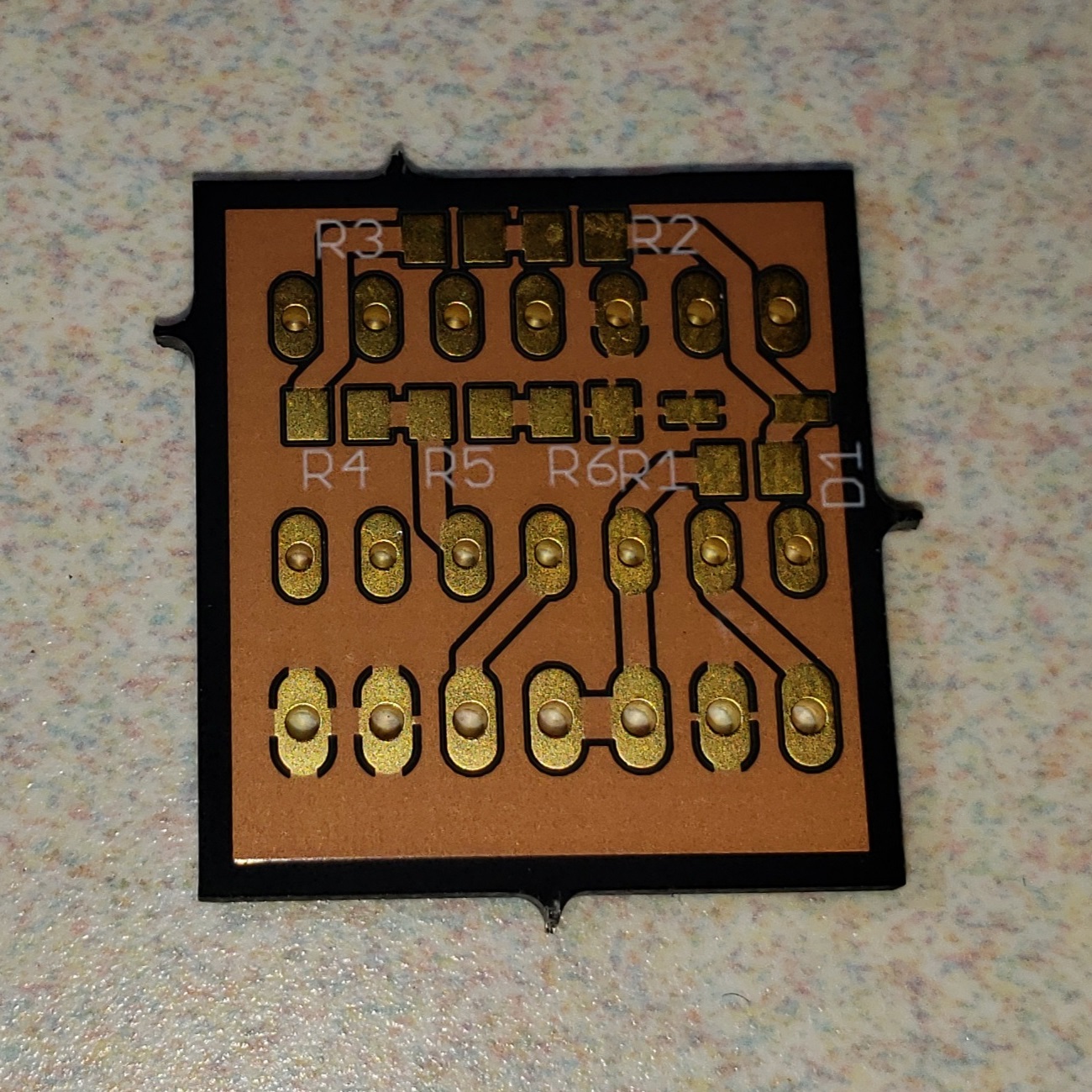Blank boards:

 Populated and connectorized:
Populated and connectorized:

 Adding dual wall heatshrink to make the assembly 100% waterproof:
Adding dual wall heatshrink to make the assembly 100% waterproof:
 Done:
Done:

I've replaced my O2 sensor two or three times already on my 1988 Comanche just in the last 7 years. I found out it went bad again this fall and got sticker shock looking at new ones, and after discussing it with a few friends of mine who also run this era of 4.0L engine management system (RENIX), it turns out this sensor fails early and often due to low quality parts available these days. It seems that almost no companies actually manufacture a titania type O2 sensor anymore and mostly they all just rebrand one companies product, which isn't particularly reliable. Given that they're expensive, only stocked by a couple stores, and unreliable I decided that I could probably do better. It's just a narrowband heated O2 sensor, right?
Well, not so much. The titania narrowband O2 sensor turns out to be special. Instead of producing a 0-1V voltage curve depending on whether the sensor is exposed to oxygen or not, its resistance changes. It is below 1kOhm when the exhaust gas is rich (low oxygen concentration) and above 20kOhm when the exhaust is lean (high oxygen concentration.) Meanwhile the rich-lean transition point voltage of the zirconia O2 sensor is 450mV, with over 450mV indicating a rich mixture and under 450mV indicating a lean mixture.
So, I designed a circuit to convert from one to the other, because the allure of $21 Amazon zirconia O2 sensors working as a drop-in replacement for my $65-120 titania O2 sensor was too strong, and I figured I could probably make the adapter circuit for a fair amount less than $120, if not a lot less than $65. Turns out I can beat that price by a lot, not a fair amount, so I've decided to sell the adapter to anyone else who is in the same position as me. Current price is $20, be aware however that you will need to solder your own connector pigtails onto the board (or solder it into your wiring harness under the dashboard) as I have been unable to find the 91-up zirconia O2 sensor pigtail for sale anywhere and you will need to get one from a junkyard and splice it into your harness or solder it onto the PCB depending on where you install this adapter board. I designed this unit to work with 1 to 4 wire narrowband sensors and will be using it with the 13123 O2 sensor intended for late 90s Jeep and Dodge RAM products, but it should work with nearly any cheap zirconia O2 sensor.
It MAY also work with certain FENIX injection system Volvos and a few older Nissan products... but I have not verified this beyond seeing that they also used titania type sensors. They may not have the same electrical interface, so if you are reading this considering using this product on such a vehicle please email me with make/model/year/engine information prior to purchase and I will check to make sure I think it will actually work for you.
Here are some pictures of the last production run:
Blank boards:

 Populated and connectorized:
Populated and connectorized:

 Adding dual wall heatshrink to make the assembly 100% waterproof:
Adding dual wall heatshrink to make the assembly 100% waterproof:
 Done:
Done:

At present I am unable to find the modern O2 sensor connector new as mentioned above so these will come as a bare assembled board only. I may include the correct heatshrink to seal the assembly after you connect your wiring, or add pigtail wires, but you will need to supply your own connector(s). I personally would recommend installing this under the dash next to the ECU rather than at the O2 sensor connector, but so far it has worked fine for me at the O2 sensor connector under the intake manifold.
EPA CLEAN AIR ACT DISCLAIMER: THIS IS NOT AN O2 SENSOR "SIMULATOR" OR DELETE KIT. THIS COMPANY WILL NOT EVER BUILD THOSE, FOR ANYONE, AT ANY PRICE, NOR WILL IT OR ITS REPRESENTATIVES OR EMPLOYEES RECOMMEND THEM TO ANYONE, PERIOD, THE END. IF YOU WISH TO INCREASE YOUR EMISSIONS YOU ARE ON YOUR OWN. THIS PRODUCT IS FOR THOSE SEEKING TO MAINTAIN OR EXCEED FACTORY FUEL ECONOMY AND EMISSIONS LEVELS ON OLDER VEHICLES WITHOUT UNDUE COST AND HASSLE RESULTING FROM REPEATED FAILURE OF OLDER UNRELIABLE COMPONENT DESIGNS. I will be testing it to determine if it can be certified to meet or exceed EPA CAA requirements as soon as possible and have several test participants lined up to attempt to pass California CARB testing with it installed. As soon as this testing has been completed, this disclaimer will be modified to list current compliance level.